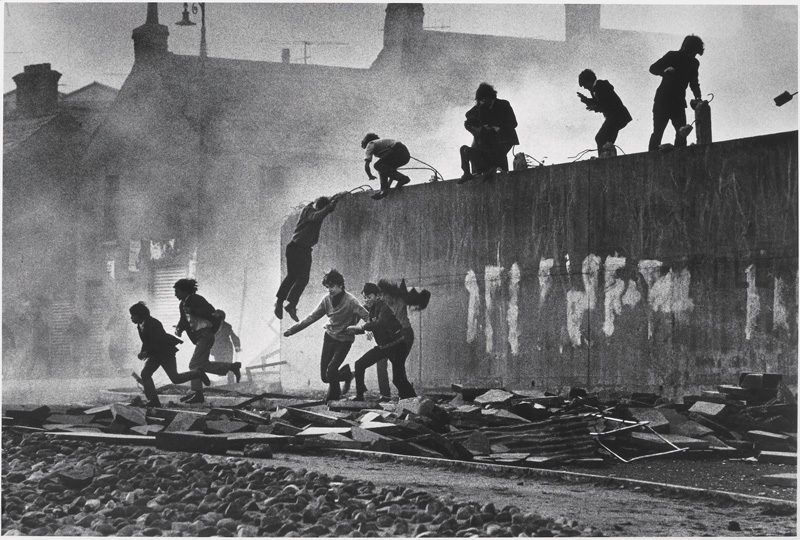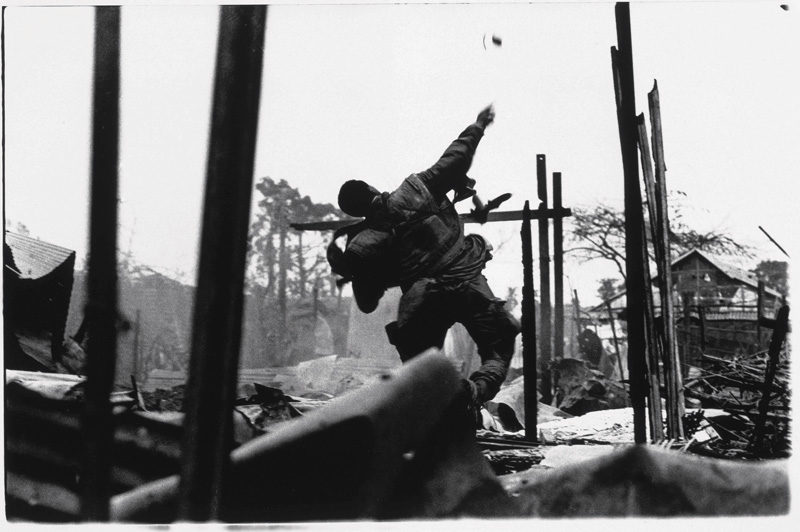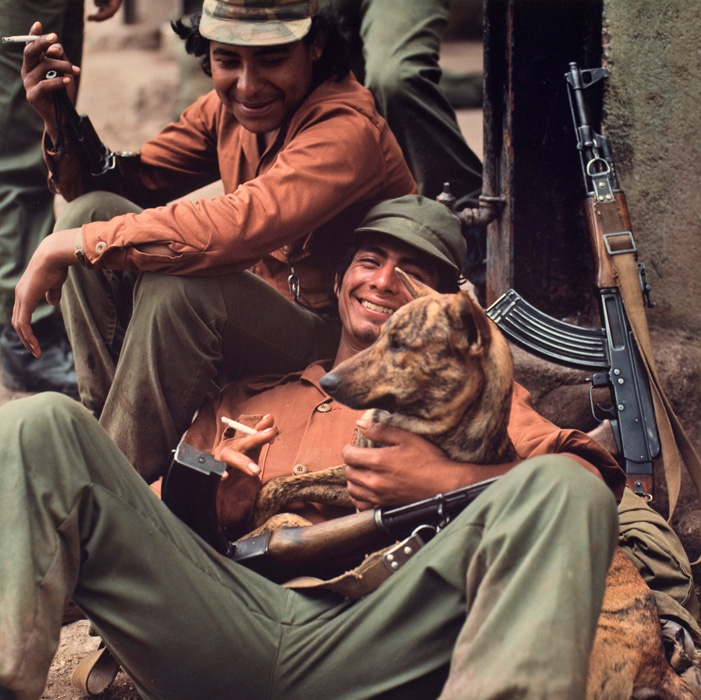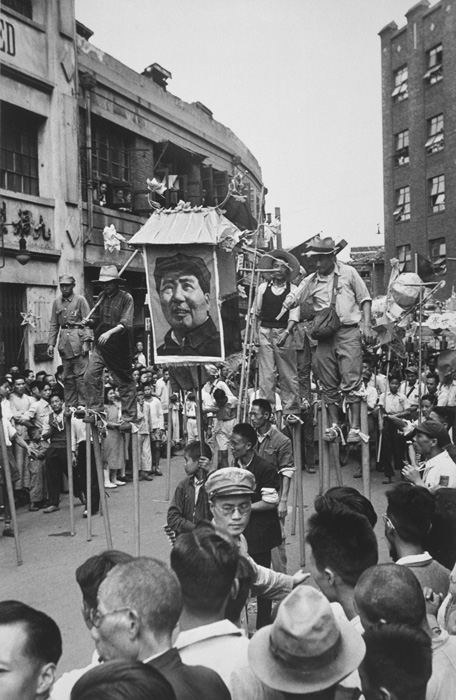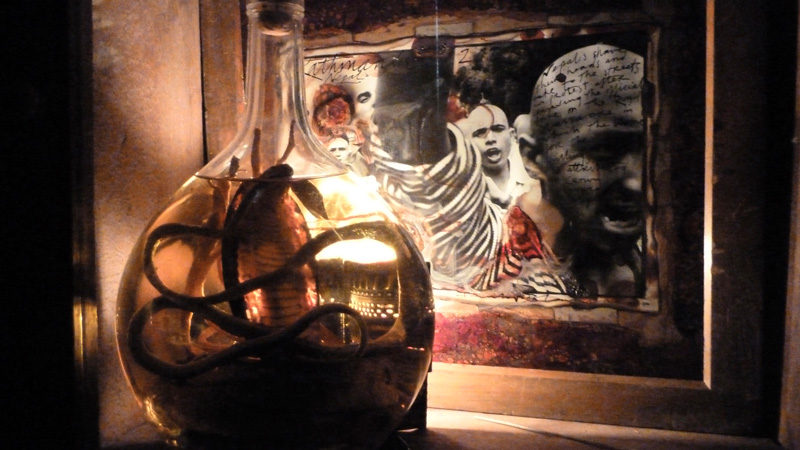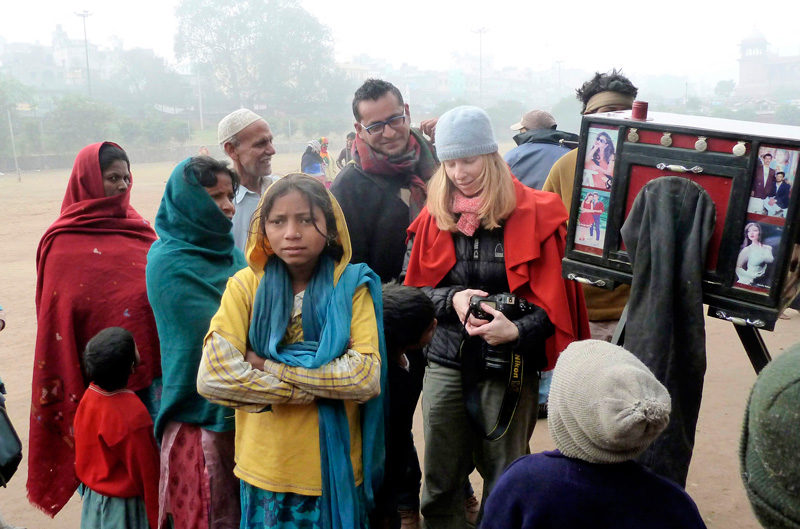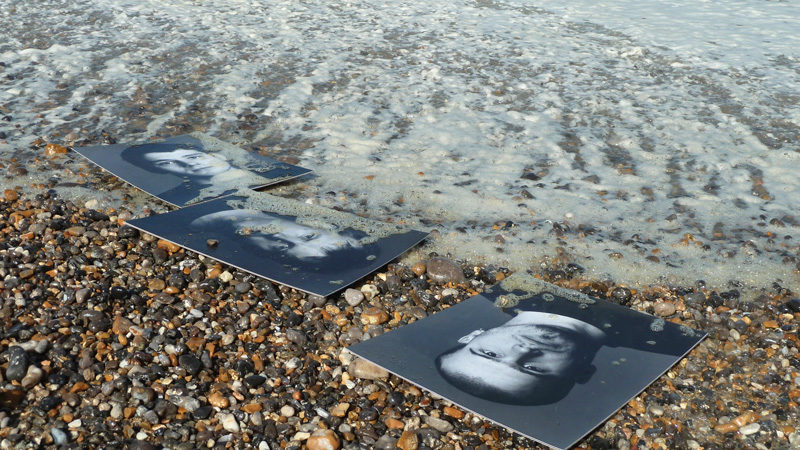[Fall 2013]
By Pierre Dessureault
By a strange coincidence, two exhibitions – a Donald McCullin retrospective and Collision: Conflict and Its Consequences – at the National Gallery of Canada, as well as a film, Dans un océan d’images, featured at the recent International Festival of Films on Art (FIFA) in Montreal, have presented a wide range of practices related to how photographs portray war and social conflict. More than ever, as Susan Sontag wrote, “Wars are now also living room sights and sounds.”1
Don McCullin: A Retrospective. In his career as a reporter, Donald McCullin covered all social conflicts in the United Kingdom in the 1950s and all wars from 1960 to 1980. His images of Vietnam, Cambodia, Ulster, and Lebanon, as well as the famine in Biafra and the floods in Bangladesh, belong to a time when live images of the raw brutality of horror were not legion and journalists, notably in Vietnam, were free to move around in the theatre of operations and report on their fields of interest. Thus, McCullin shared the soldiers’ life and identified with them. “ I lived like an animal,” he stated about his experience during the Tet offensive, in Hué. “I didn’t wash. I ate what I could. I slept where I could. I sponged food off of soldiers who were only too pleased to give it to you to start off a fresh conversation. And I started becoming much more akin to the soldiers.”2 The involvement resulting from this constant proximity is that of an observer on the lookout, ready to put his perceptions and biases into play in an instant. McCullin’s photographs plunge us into the heart of the chaotic moment. His raw, cruel, and striking gaze spares us no detail, as scabrous as it might be, in order to show the daily life of war and the stigmata of famine in all of their horror, in the hope of provoking awareness and raising indignation.
Over time, McCullin’s images have become icons, not only because of their strength, with subjects captured from as close as possible and exceptional aesthetic quality, or their portrayal of the rhetoric of tragedy and the iconography of suffering, but because they crystallize a moment captured on the fly – with no before or after – inscribed forever in an image that transgresses the limits of what war photography should and can show. Their emblematic quality comes also in large part from their relative rarity at the time when they were first put in the public eye; they were found in the pages of news publications, such as The Observer and the Sunday Times, that were addressed to a readership interested in McCullin’s concerns. They were thus situated in anticipation of the development of dissemination vectors after the 1960s – television, the press, mass media, and, more recently, the Internet – that relay a tidal wave of images directly to all corners of Earth in an instant.
Collision: Conflict and Its Consequences. Collision examines images of conflict from the perspective of personal and collective memory along three complementary axes: witnesses, memorial sites, and symbolic reconstruction. Like McCullin, the live witnesses report on events in which they are involved from a personal, often privileged, position. Sam Tata, for instance, walked the streets of Shanghai and composed, day by day, a portrait of the arrival of the Red Army in his hometown. It was only many years later, once the snapshots were assembled into a coherent whole, that their true importance as a testimony to a key moment in history was revealed.
In his images of El Salvador, Nicaragua, and Palestine, areas that he has been visiting for many years and where he has obviously formed close ties with his subjects, Larry Towell embraces the protagonists’ movements, taking the side of FMLN insurgents in El Salvador and relatives of the disappeared in Guatemala, and showing his sympathy for the Palestinians; his gaze sidesteps the usual powers. In 1984, Michael Mitchell went to Nicaragua for a field study; he wanted to gather documents first-hand to shed unprecedented light on a situation that had become hopelessly tangled due to media overkill. His visual testimony is enriched by the addition of texts explaining the circumstances surrounding the pictured events and authenticating the pictures’ relationship with those events. These photographs thus escape the flattening effect of raw facts to become the documented point of view of a person who reports what he has seen and also provides keys to establishing their meaning. Although Peter Sibbald and Benoit Aquin immersed themselves in the Oka Crisis in 1990, they were not reporting on or analyzing the sequence of events – these tasks were undertaken by many others. Rather, they deliberately placed themselves on the margins of the media circus to witness the witnesses of the event, whose practices they challenged: the mediatization of the conflict became their true subject.
Whereas images are traces of the past giving access to history, memorial sites materialize and celebrate remembering. Jack Burman’s photographs of the Auschwitz-Birkenau camp leave the viewer’s conscience free to wander. These views of deserted buildings, vestiges of events inscribed in the depths of universal memory, combined with a legend simply stating the images’ where, when, and how, take us directly into the world of the Nazi concentration camp. Verhalte dich ruhig (Keep silent), the injunction written on the wall of a latrine inthe camp, takes on a completely different meaning when it is used as the title of Burman’s series of images. It is still a commandment meant to humiliate the prisoners, but also an invitation to contemplation, to allowing the memories of the events that once took place in this place tprise again. Unlike the above images, which evoke the past through its vestiges, the Vimy memorial documented by Peter MacCallum monumentalizes and museumifies an official version in memory of Canadian soldiers who died in combat in the Great War.
Through a wealth of accepted signs that become reminders of the tragedy, the site of what turned into a bloody butchery is transformed into a place of worship devoted to conserving a memory set in stone. Some artists appropriate a hidden history and reconstruct it in a symbolic mode. In reconstructing what might have been the flight of civilians liked tracked animals during the Korean war, artist Jin-me May Yoon brings to the surface of her conscience moments in which individual existence is confused with the collective fate that her family has relegated to silence but that marked her own unconscious.
From his multiple stays in Lebanon, where his grandparents are from, Jayce Salloum produced a number of installations in which images, texts, and objects gathered in that country remind us that beyond the tragic current events, Beirut is a city with a long, rich past. This complex grouping summons the past through various testimonials and compares it with the reactions of the artist, who positions himself as a biased observer of the news and wonders about the representation that it produces. In creating a hierarchy among images, Salloum sets up a critical distance and composes a group of “parallel stories” that counteract amnesia and bring a deeper dimension to the “history of the present.”
Dans un océan d’images. In her film, director Helen Doyle continues her “reflection on the image that trivializes, as opposed to the image that stands out and is imposing.”3 Similarly, the installation 24hrs in Photography, produced by curator Erik Kessels in Amsterdam (for the exhibition What’s Next? – The Future of the Photography Museum), in which he assembled thousands – perhaps millions, it’s impossible to say – of small images resulting from twenty-four hours of exhibition on Flickr, seems to be the perfect expression of the contemporary tower of Babel that the world of images has become. Museums invaded by piles of prints, in which visitors circulate freely, are like an immense open bar where people can come and serve themselves, and the photographs’ only value lies in their proximity and their availability in the moment.
And so, how can new common ground be found for encouraging encounters between photographers and events as well as between viewers and images? The photographers that Doyle interviewed proposed a number of ways. All of them are based on the need to create a critical distance from the world of images by removing them from the media landscape and installing them in a critical space. For it is not what they portray that forms judgments about tragic events, but the process of reflection triggered by their migration into the viewer’s gaze. A number of reporters question their practice and the true scope of their images, and try to endow them with a level of depth that would distance them from current production. In Bagdad Calling, Dutch photographer Geert Van Kesteren uses snapshots made by Iraqi citizens with their cell phones to make a mosaic in which he orchestrates and differentiates a multitude of anonymous viewpoints, sounding the knell for the privileged position of the war reporter by substituting his construction of a coherent grouping.
In her recent projects, Canadian photographer Lana Šlezic stages her subjects. In one project, homeless Indian children pose before a black background, looking directly at the camera and challenging the photographer. In another, Šlezic makes portraits of Afghani women using an old view camera found on site. The poses that mark the distance between the photographer and her subjects and show their active participation in the taking of the pictures, as well as the effect of the device used, confirm that we are truly looking at images – and, what is more, images representing the result of a process that takes place according to a protocol firmly established by the photographer in her improvised studio.
Australian Phillip Blenkinsop’s photographs taken in Timor and Laos, first published in news articles, were then reworked. In some cases, the artist marked the surface of the image with a torch to accentuate the subject or made handwritten inscriptions through which he manifested his subjectivity in a completely personal gesture. Other images are incorporated into constructions in which they are adjacent to groupings of found objects, forming miniature installations that bear the memory of forgotten battles or cultures portrayed. These actions accentuate the materiality of the images by giving them a weight and transforming them into unique objects, thus radically changing the viewer’s gaze on them. Bertrand Carrière and Alfredo Jaar appropriate images to feature them in mises en scène. In his installation 913, Carrière evoked the Allied landing in August 1942, during which 913 Canadian soldiers lost their lives. Sixty years later, he created a symbolic memorial by placing on the beach where the aborted operation had taken place 913 head-and-shoulder close-up portraits of men wearing black T-shirts. This ephemeral commemoration existed only until the next tide swept away the photographs and the memories that they carried.
The monumental Rwanda Project to which Alfredo Jaar has devoted a number of interventions never looks at the conflict head on. In the installation The Eyes of Gutete Émérita, he has made a mountain of slides on a huge light table, a million slides for a million dead people. A single image repeated into infinity: a close-up of the eyes of a woman who saw her family massacred. With this tight shot of eyes that have seen, the only eyes empowered to bear witness, Jaar forces us to question our own gaze, which will never be anything but at a remove, formatted by the avalanche of images of genocide to which we have been subjected. This woman’s eyes, Jaar says, are “a kind of mirror” in which viewers are immersed, and in which they will see themselves confronted with their own representations. In contrast to the accumulation of insignificances that form the intervention in What’s Next, Jaar’s installation endows a unique, single image with the power to signify an entire genocide. As these two exhibitions and this film eloquently illustrate, “The question is no longer whether images transcribe the real. We have realized that, in all cases, they interpret it. They don’t lie; they deliver what they can give through a new reality that is their own.”4
Translated by Käthe Röth
2 Don McCullin, in The Concerned Photographer2, ed. Cornell Capa (New York: Grossman, 1972), n.p.
3 Helen Doyle, Note of intention for the film, www.informactionfilms.com/fr/productions/dans-un-ocean-dimages.php (our translation).
4 Laurent Gervereau, Histoire du visuel au XXe siècle (Paris: Éditions du Seuil, 2003), p. 15 (our translation).
Pierre Dessureault is a historian of photography and independent curator. He has organized numerous exhibitions and published a large number of catalogues and articles on contemporary photography. He was the editor of Nordicité (Éditions J’ai VU, 2010), a book that brought together photographs by Quebec, Canadian, and Northern European artists and essays by experts in art history and the human sciences.

